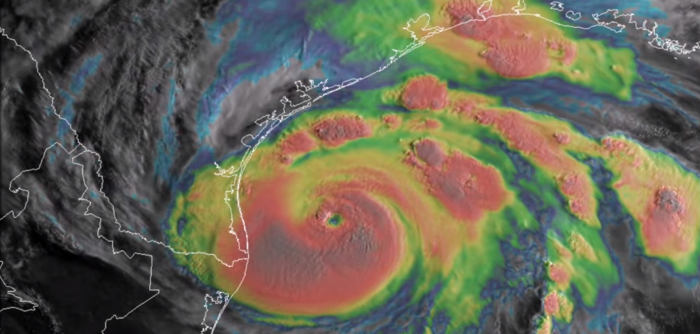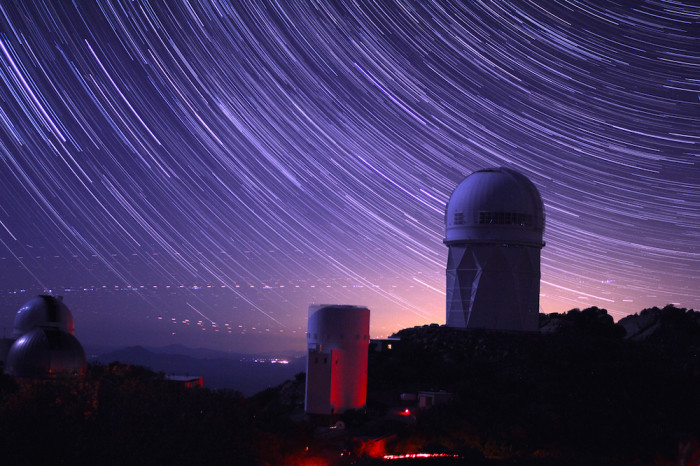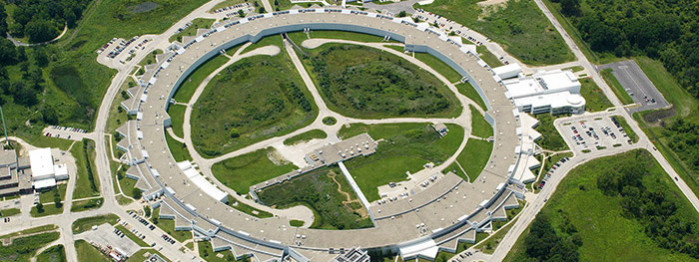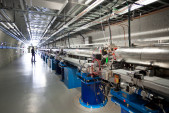About ESnet6
The Energy Sciences Network (ESnet) is the United States Department of Energy's (DOE’s) dedicated scientific network. The traffic that travels over ESnet on a daily basis contains data from tens of thousands of researchers – data that could lead to the next major discovery or scientific breakthrough.
Our high-speed, high-performance network was built with a specific vision: Ensure that scientific progress is unconstrained by the physical location of instruments, people, computational resources, or data. The latest generation of this network, ESnet6, was unveiled in October 2022.

Studying specific weather-related phenomena, including the behavior of devastating storms that impact specific regions, requires access to high-quality datasets from the National Oceanic and Atmospheric Administration. ESnet facilitates these data transfers for researchers across the DOE national laboratory complex. (Credit: National Oceanic and Atmospheric Administration)
Why is ESnet6 needed?
The scientific community is facing a growing challenge: dramatically increasing data volumes.
Telescopes are scanning the universe with greater precision.
Sensors and detectors are gathering experimental results with greater sensitivity and speed.
Supercomputers are simulating scientific phenomena at higher resolutions and are tasked to process large amounts of data for machine learning-related tasks and artificial intelligence.
ESnet6 is ESnet's next-generation network, designed to help the DOE research community navigate this “data deluge” by giving them more bandwidth, greater flexibility, and faster data transfer capabilities.
What is ESnet6?
The design includes
- An expanded, dedicated fiber optic backbone.
- New network automation capabilities.
- Improved cyber security features.
- A platform for real-time telemetry.

ESnet helps scientists manage, analyze, and exchange large data sets generated by supercomputers, large-scale research collaborations, and experimental facilities, such as the Dark Energy Spectroscopic Instrument (DESI) now operating at the Mayall Telescope on Kitt Peak in Arizona. When complete, the survey will have gathered data from 35 million galaxies dating back 11 billion years. (Credit: P. Marenfeld & NOIRLab/NSF/AURA)
ESnet6’s New Capabilities
More capacity and control over how large sets of data flow over the network including
-
An expanded, dedicated fiber optic backbone comprising over 15,000 miles of fiber optic cable.
-
New network automation capabilities that allow us to proactively and automatically manage the configuration of the network and redirect giant flows of science data.
-
A new platform that allows ESnet to monitor data while still in motion, improving overall network performance.
Why? Scientific experiments are producing larger data sets as instruments become more advanced and precise, and more experiments require the use of high-performance computing resources, which means that data has to travel across our network. ESnet connects the fastest, most advanced supercomputers in the world.
ESnet6’s new increased capacity and intelligent software allow our team to keep that traffic flowing, eliminating bottlenecks and ensuring that we can continue to provide high-performance, low-latency networking services for the scientific community. With ESnet6, DOE scientists will be equipped with the most sophisticated technology to help tackle the grand challenges we face today in climate science, clean energy, the production of semiconductors, microelectronics, the discovery of quantum information science, and more.
Heightened cybersecurity and resiliency including
-
New features to improve the overall security of the network using “black hole” routing capabilities for connected sites.
-
Upgraded technological components that were nearing end-of-life to ensure ongoing reliability and security.
Why? The need for powerful cybersecurity is pretty self-explanatory, but as malicious actors improve their technology, it’s our responsibility to keep our technology up-to-date and ensure that our network and the scientists it serves are protected against new threats. We’ve also employed “black hole” routing capabilities, which block any communications to or from any source that we (or our automated systems) deem a threat without interrupting benign traffic on the network. This means that if, for example, one of our clients gets hit with a distributed denial-of-service attack, they can still reach out to us for help.

ESnet is working with the General Medical Sciences and Cancer Institutes Structural Biology Facility at the Advanced Photon Source (APS) to streamline and improve data movement activities for users of the APS beamlines. (Credit: Argonne National Laboratory)
Why we’re excited about all these upgrades
Most scientists don’t want to spend much time thinking about their networking needs. However, as we move toward this data-deluged future, we are setting our sights on enabling new scientific paradigms. The Superfacility model, for example, provides scientists the ability to analyze data in situ with the power of supercomputers and in real-time. This feedback loop helps researchers make the best use possible of often limited instrument time. The scientists already working with ESnet to co-design their experiments are doing groundbreaking work. (Check out the work we recently did with the Small-molecule serial femtosecond X-ray crystallography (smSFX) project, or the way we were able to team up with the Advanced Research on Integrated Energy Systems (ARIES) project to support their demonstration.)


